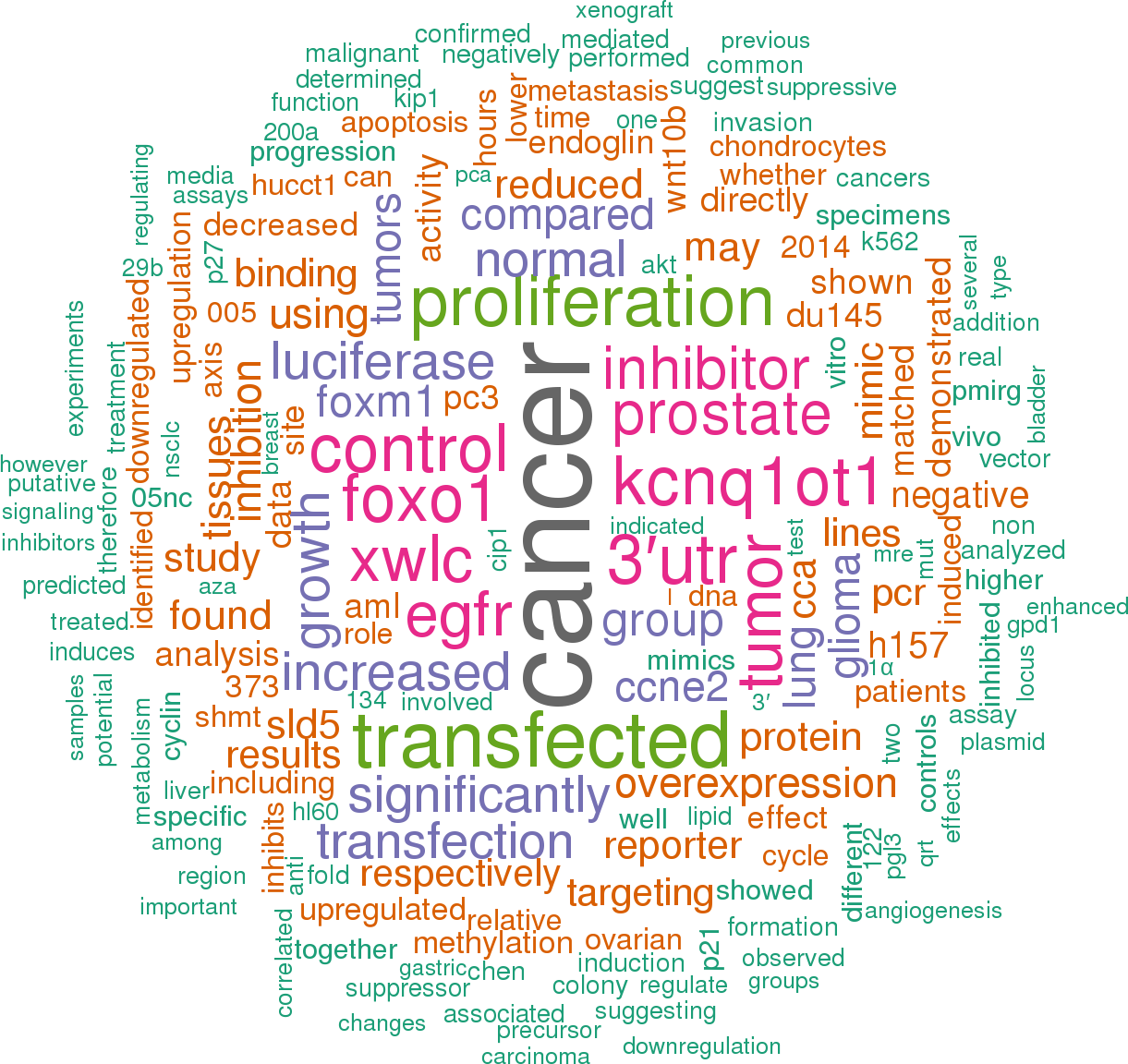Accession
MI0000778
Symbol
HGNC:
MIR370
Description
Homo sapiens
hsa-mir-370 precursor miRNA mir-370
Gene
family?
family?
RF00740;
mir-370
Summary
Caution, this is an AI generated summary based on literature. This may have errors. ?
MIR370 is a microRNA associated with various cancers, including head and neck cancers, and has been implicated in affecting the prognosis of primary central nervous system lymphoma (PCNSL) patients [PMC5354851][PMC9428130[PMC9428130]. It has been shown to enhance gastric cancer (GC) cell proliferation, epithelial-mesenchymal transition (EMT), and invasion by directly downregulating UQCRC2 levels [PMC7378919]. Moreover, MIR370 is involved in the regulation of genes such as Sld5 through the suppression by DNA-methyltransferase1 (DNMT1), which is influenced by interleukin 6 [PMC5885281]. It also has a direct binding effect with MGMT as validated by a dual luciferase reporter assay [PMC5011744]. Interestingly, lncPVT1 can act as a molecular sponge to inhibit MIR370 and promote FOXM1 expression [PMC9373174]. The expression of MIR370 can be suppressed through epigenetic mechanisms such as DNA methylation, which in turn affects the expression of tumor suppression genes [PMC6213964][PMC7381748[PMC7381748]. Additionally, inhibition of MIR370 results in an increase in FoxM1 expression in certain cell lines [PMC3533721], and it is also involved in regulating other genes such as SCD5 through miRNA-mRNA regulatory pairs [PMC7584575]. The levels of MIR370 have been studied in various human lung cancer cell lines to explore its effect on cancer proliferation and metastasis [PMC5675699], highlighting its potential role as a therapeutic target.
Literature search

76 open access papers mention hsa-mir-370
(823 sentences)
(823 sentences)
Sequence
12486
reads,
16
reads per million, 96 experiments
agacagagaagcCAGGUCACGUCUCUGCAGUUACacagcucacgaguGCCUGCUGGGGUGGAACCUGGUcugucu
((((((....(((((((..((((((.((((...(((.........))).)))).))))))..)))))))))))))
((((((....(((((((..((((((.((((...(((.........))).)))).))))))..)))))))))))))
Structure
agaa CA U UUA agc
agacag gcCAGGU CGUCUC GCAG Cac u
|||||| ||||||| |||||| |||| ||| c
ucuguc UGGUCCA GUGGGG CGUC Gug a
---- AG U --C agc
Annotation confidence
High
Do you think this miRNA is real?
Comments
The mature sequence shown here represents the most commonly cloned form from large-scale cloning studies [3].
Genome context
chr14: 100911139-100911213 [+]
Disease association
hsa-mir-370 is associated with one or more human diseases in the Human microRNA Disease Database
| Disease | Description | Category | PubMed ID |
|---|
Mature hsa-miR-370-3p
| Accession | MIMAT0000722 |
| Description | Homo sapiens hsa-miR-370-3p mature miRNA |
| Sequence | 48 - GCCUGCUGGGGUGGAACCUGGU - 69 |
| Evidence |
experimental
cloned [1-3], Illumina [4] |
| Database links |



|
| Predicted targets |


|
Mature hsa-miR-370-5p
| Accession | MIMAT0026483 |
| Description | Homo sapiens hsa-miR-370-5p mature miRNA |
| Sequence | 13 - CAGGUCACGUCUCUGCAGUUAC - 34 |
| Evidence |
experimental
Illumina [4] |
| Database links |



|
| Predicted targets |


|
References
|



